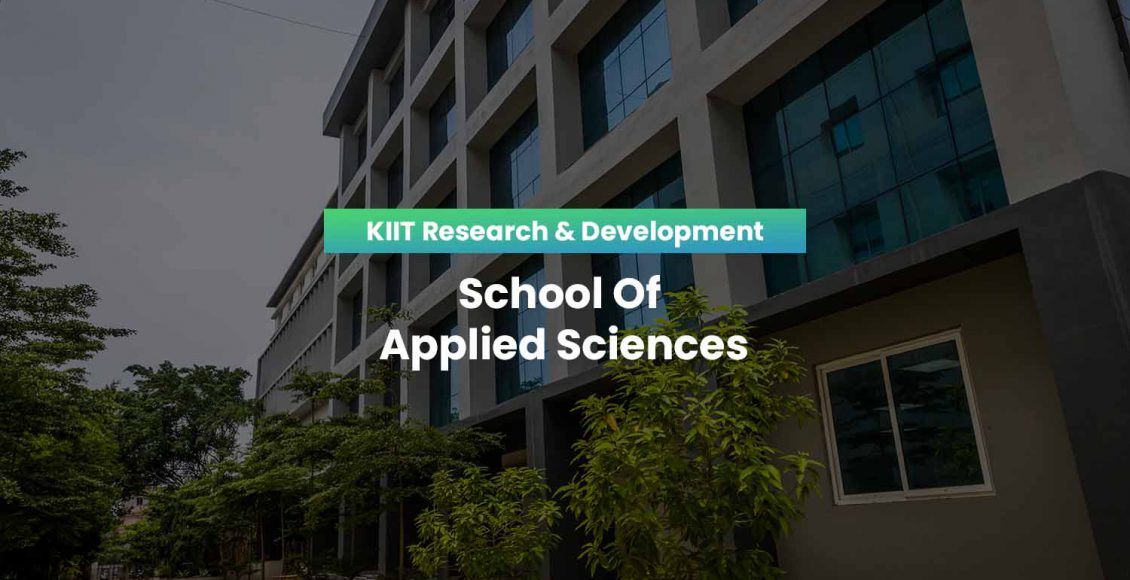School of Applied Sciences (March 2022)
Journal papers
1. Mohapatra D. K., Praharaj S., and Rout D. (2022), Electrochemical Charge Storage Performance of Mesoporous MoO3@Co3O4Nanocomposites as Electrode Materials, Nanotechnology, Vol. 33, pp. 155709, DOI:https://doi.org/10.1088/1361-6528/ac467e (IF: 3.874).
Abstract
The capacitive performance of MoO3@Co3O4 nanocomposite is compared with pristine Co3O4 nanoparticles (synthesized by hydrothermal technique). BET surface area of ∼41 m2 g−1 (twice that of Co3O4) and average pore size of 3.6 nm is found to be suitable for promoting Faradaic reactions in the nanocomposite. MoO3@Co3O4 nanocomposite is capable of delivering a superior specific capacitance of 1248 F g−1 at 0.5 A g−1 along with notable stability of 92% even after 2000 cycles of charge-discharge and Coulombic efficiency approaching 100% at 10 A g−1. The outstanding results obtained in this work assure functional adequacy of MoO3@Co3O4 nanocomposite in fabricating high-performance electrochemical capacitors.
2. Praharaj, S., Singha A., and D. Rout, D. (2022),Electrical properties of 0.7Na0.5Bi0.5TiO3-0.2SrTiO3-0.1BaTiO3 Lead Free Ceramic: An Off-Morphotropic Phase Boundary Composition, Material Today: Proceedings, Vol. 49, pp. 333–358, DOI: https://doi.org/10.1016/j.matpr.2021.02.146.
Abstract
Probing into the electrical behavior of ceramics is very essential for casting them in real life applications. In this work, we report the temperature dependence of dielectric permittivity and impedance spectroscopic studies of 0.7Na0.5Bi0.5TiO3-0.2SrTiO3-0.1BaTiO3 to investigate its electrical properties. A Lorentz type law was found to well describe the diffused permittivity peak by two independent fitting processes. Such a peculiarity was related to the temperature response of the PNRs. This was ascertained from the temperature and frequency dependent Z* and M′′ spectra respectively. Combined graphs of normalized Z′′(f) and M′′(f) in the range 50200 °C predict short-ranged dipolar relaxations within the grains.
3. Devi M., Praharaj S., and Rout D., (2022), Industrial Problems and Solution towards Visible Light Photocatalysis, in Nanostructured Materials for Visible Light Photocatalysis, A. K. Nayak and N, K,Sahu (Eds.), Amsterdam: Elsevier, , pp, 535–567, https://doi.org/10.1016/B978-0-12-823018-3.00018-X
Abstract:
Visible light photocatalysis for the remediation of water, laden with effluents from industries, has been the subject of extensive research over the past few decades, resulting in the production of many scientific reports. Though this technique is cost-effective, eco-friendly, and easily available, application on an industrial scale is far from being realized. In this chapter, we review the recent advancements in the photocatalysis in the direction of wastewater treatment from the viewpoint of three generations of photocatalysts, their drawbacks, and advantages. Several strategies proposed by various researchers aiming to bring in industrially relevant water treatment processes have been discussed. Further, an overview of prevalent industrial problems along with their solutions and advancements provided in the chapter will definitely enrich the literature and help to achieve a better future in terms of technology transfer from bench scale to industrial scale.
4. Chaudhuri, S., Chakraborty, P., Das, M., and Das, B. (2022), Magnetohydrodynamic (MHD) Mixed Convection in a Non-Newtonian Third-Grade Fluid Flowing through Vertical Parallel Plates: A Semi-Analytical Study of Flow and Heat Transfer, Heat Transfer. https://doi.org/10.1002/htj.22455.
Abstract: Buoyancy-assisted and buoyancy-opposed mixed convection of a third-grade fluid, which flows through vertically oriented parallel plates, subjected to uniform and constant wall heat fluxes under the effect of an externally applied magnetic field, are investigated. The coupled, non-linear conservation equations of momentum and energy are solved employing the collocation method (CM) and velocity and temperature distributions are solved semi-analytically. The results produced by the CM and the results of exact solution are compared for the buoyancy-assisted and buoyancy-opposed flow of a Newtonian fluid through the vertically oriented parallel plates arrangement without the effect of the externally applied magnetic field.
5. Das, G. and Nanda, S.(2021),Some Sequence Spaces and Function Spaces, Pan American Mathematical Journal, Vol 31, No.4, pp. 11–18.
6. Nanda, S. (2021),Review on Sequence Spaces, Matrix Transformations, Fourier Series, Approximation and Fixed Point Theory, Journal of Orissa Mathematical Society, Golden Jubilee YearVolume of Orissa Mathematical Society, Vol. 40.
Publication of Research Monograph
Das, G. and Nanda,S. (2022), ,Banach Limit and Applications, Taylor and Francis (CRC Press)
Publication of Textbooks
- Nanda, S. (2022), Discrete Mathematics, Allied Publishers Pvt. Ltd. (2022)
- Nanda, S. (2022), Algebra, Allied Publishers Pvt. Ltd. (2022)


